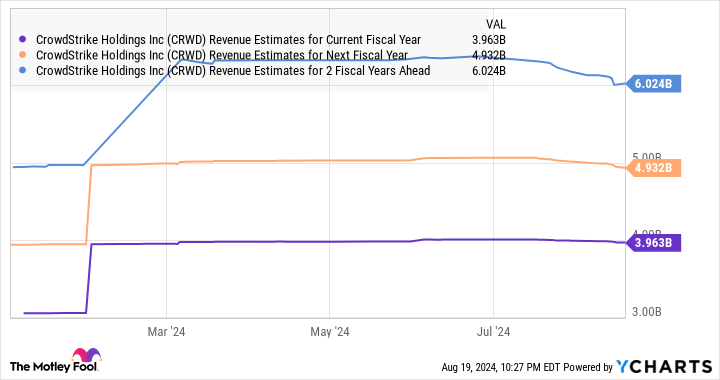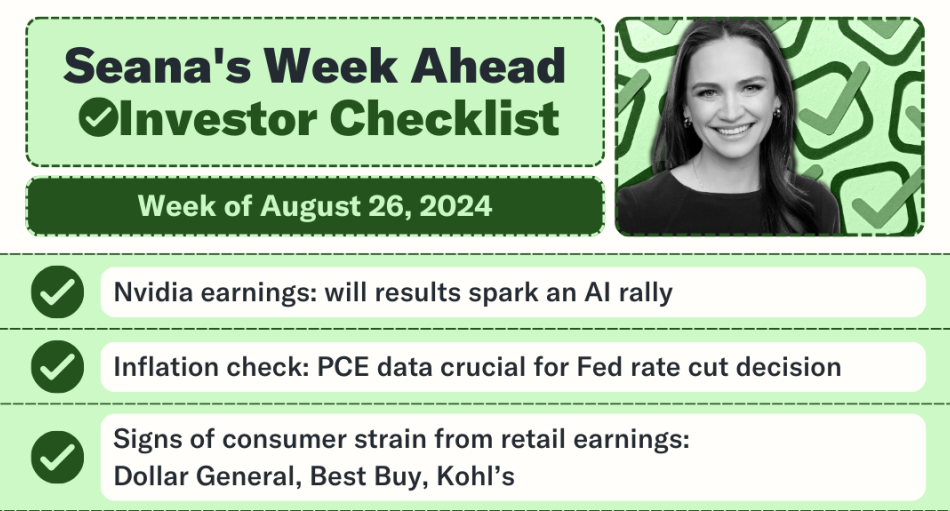Is the Stock Market Going to Crash? I Don't Know. That's Why I Own This High-Yield Stock.
Markets that go up have always been followed by markets that go down. It’s the typical bull/bear cycle that investors have to deal with.
Right now, the market is up near historic highs, which is why I’m happy to own some boring necessity stocks. One of my favorites is utility Black Hills (NYSE: BKH). Here’s why I own this high-yield stock and why you might want to buy it, too.
What does Black Hills do?
With a market cap of just $4 billion or so, Black Hills is not a particularly large utility. In fact, it is dwarfed by industry giant NextEra Energy (NYSE: NEE), which has a market cap of $160 billion. Compared to that, Black Hills is just a rounding error! Yet it still provides a necessity of modern life.
The company has around 1.3 million natural gas and electric customers across parts of Arkansas, Colorado, Iowa, Kansas, Montana, Nebraska, South Dakota, and Wyoming. Without the energy Black Hills supplies, these customers would be operating in the Dark Ages.
The business is regulated, so it has to get its rates and capital spending plans approved by the government. However, being regulated also means it has a monopoly in the regions it serves. Those 1.3 million customers have nowhere else to turn for their energy needs.
Black Hills is a bit of a tortoise, given the business, but with the market near all-time highs, I’m happy to have a few reliable tortoises in my portfolio. Because of its small size, however, many investors have never heard about Black Hills. This is too bad because it has handily outperformed the industry giants on one key metric: dividends.
Black Hills is a Dividend King
NextEra Energy, which most investors have heard of, has increased its dividend annually for 30 years. That’s a very impressive streak, but it pales in comparison to the 54 consecutive years of annual dividend increases that Black Hills has accumulated. It is one of the longest dividend streaks in the utility sector, making it a highly elite Dividend King.
Think about the last five decades: The list of bad times includes the pandemic, the Great Recession, the dot.com bust/recession, Black Monday, and the raging inflation and oil crisis of the 1970s.
And that’s just the highlight reel. There were smaller ups and downs on Wall Street and in the economy, too. Through it all, Black Hills continued to reward investors with annual dividend increases. That is the type of consistency I want to have in my income portfolio when the market is hovering at lofty levels.
But there’s more to the story than just the dividend. For example, Black Hills’ customer base is growing nearly three times faster than the broader U.S. population. That should support solid growth as the utility invests to serve that expanding customer base.
To put some numbers on that, the five-year capital investment plan is $4.3 billion, which management expects to translate into earnings growth between 4% and 6% a year.
The dividend will likely track along with earnings growth, meaning roughly 5% dividend growth is the target. That’s a solid number for a utility and just happens to be the annualized rate of dividend growth Black Hills has achieved over the past decade. So basically, it expects to keep doing what it has done for years: supplying customers with reliable power, and investors with reliable dividend growth.
Black Hills is a boring and reliable dividend stock
I’m not going to brag to anyone about owning Black Hills; it isn’t that kind of stock. It is a foundational investment that I can comfortably own through good times and bad knowing that its essential service will always be in demand. Along the way, I can collect a lofty 4.5% dividend yield, one of the highest in the utility sector, backed by a growing dividend (for reference, NextEra’s yield is just around 2.6%).
If Wall Street hits the ceiling and a bear market comes along, I’m not going to lose any sleep owning Black Hills. If you are a conservative dividend investor, that will probably sound attractive to you, too.
Should you invest $1,000 in Black Hills right now?
Before you buy stock in Black Hills, consider this:
The Motley Fool Stock Advisor analyst team just identified what they believe are the 10 best stocks for investors to buy now… and Black Hills wasn’t one of them. The 10 stocks that made the cut could produce monster returns in the coming years.
Consider when Nvidia made this list on April 15, 2005… if you invested $1,000 at the time of our recommendation, you’d have $792,725!*
Stock Advisor provides investors with an easy-to-follow blueprint for success, including guidance on building a portfolio, regular updates from analysts, and two new stock picks each month. The Stock Advisor service has more than quadrupled the return of S&P 500 since 2002*.
*Stock Advisor returns as of August 22, 2024
Reuben Gregg Brewer has positions in Black Hills, Dominion Energy, and Southern Company. The Motley Fool has positions in and recommends NextEra Energy. The Motley Fool recommends Dominion Energy and Duke Energy. The Motley Fool has a disclosure policy.
Is the Stock Market Going to Crash? I Don’t Know. That’s Why I Own This High-Yield Stock. was originally published by The Motley Fool
1 Magnificent Dividend Stock Down 40% to Buy and Hold Forever
Rexford Industrial (NYSE: REXR) is offering a 3.3% dividend yield today, which is more than twice the yield of the S&P 500 index. It has increased its dividend annually for a decade and at a rapid pace of more than 10% a year. The stock is still 40% below the highs reached in 2022, despite continued strong operating performance. Here’s why you might want to buy this real estate investment trust (REIT) and hold on to it for the long term.
What does Rexford Industrial do?
As Rexford Industrial’s name implies, it owns industrial real estate. The list includes both warehouses and manufacturing assets, which is pretty typical of an industrial REIT. Rexford currently owns over 420 properties and has around 720 buildings. It has roughly 1,600 lessees. It is one of the larger industrial REITs, sporting a market cap of $11 billion.
The biggest difference between Rexford and other industrial REITs is that Rexford is entirely concentrated on a single geographic region, Southern California. For investors who focus on owning diversified businesses, this REIT may be a hard sell. But don’t write it off before you understand a little bit more about the Southern California region.
Southern California is the largest industrial market in the United States. If you pulled it out by itself, it would be the fourth largest industrial market in the world. In other words, it is a highly attractive region in which to operate. Southern California also happens to have the lowest industrial vacancy rate in the United States. If you had to focus on one industrial region, this would probably be the one you would choose.
What’s going on with Rexford’s business?
From a big picture perspective, the industrial real estate sector isn’t doing quite as well as it was just a few years ago. For example, while Southern California has the lowest vacancy rate for industrial assets, the vacancy rate has more than doubled to nearly 4% since hitting a low point in 2023. There has been a similar spike in vacancy rates in other regions as well, which has investors worried about the entire industrial REIT sector.
That could be an opportunity for investors, given that Rexford’s stock has fallen so hard. Indeed, despite the headwind of rising vacancy rates, Rexford’s portfolio was 96.9% occupied in the second quarter. And it was still able to increase lease rates by a huge 67% on leases that were rolling over in Q2. That is a clear indication that demand for its properties remains high.
This strong leasing performance, meanwhile, resulted in funds from operations (FFO) per share rising by an impressive 11% year over year in the quarter. There’s reason to believe that this strong performance will continue. For starters, lease rollovers will likely allow for material rent boosts for several more years. But there’s more.
Rexford has notable plans to upgrade its assets (which will allow it to charge higher rents), and there are rent bumps built into its existing leases, too. On top of that, Rexford continues to acquire new properties, expanding its portfolio. In other words, there are internal and external growth levers that management is using to drive continued strong performance. So, despite the stock drop, Rexford is still operating at a high level.
Rexford is a buy and hold
To be fair, Rexford’s dividend yield might not be high enough to entice investors focused on maximizing current income. But the impressive dividend growth rate here should make it highly attractive to dividend growth investors. While the stock price is down because the industrial sector is, indeed, softening, Rexford continues to operate at a very high level, at least partly because of its unique geographic focus. If you can see the value in this REIT’s approach, Rexford Industrial is the kind of dividend stock you’ll likely be happy you bought while others were selling.
Should you invest $1,000 in Rexford Industrial Realty right now?
Before you buy stock in Rexford Industrial Realty, consider this:
The Motley Fool Stock Advisor analyst team just identified what they believe are the 10 best stocks for investors to buy now… and Rexford Industrial Realty wasn’t one of them. The 10 stocks that made the cut could produce monster returns in the coming years.
Consider when Nvidia made this list on April 15, 2005… if you invested $1,000 at the time of our recommendation, you’d have $792,725!*
Stock Advisor provides investors with an easy-to-follow blueprint for success, including guidance on building a portfolio, regular updates from analysts, and two new stock picks each month. The Stock Advisor service has more than quadrupled the return of S&P 500 since 2002*.
*Stock Advisor returns as of August 22, 2024
Reuben Gregg Brewer has no position in any of the stocks mentioned. The Motley Fool has positions in and recommends Rexford Industrial Realty. The Motley Fool has a disclosure policy.
1 Magnificent Dividend Stock Down 40% to Buy and Hold Forever was originally published by The Motley Fool
Should You Buy CrowdStrike Stock Before Aug. 28?
CrowdStrike Holdings (NASDAQ: CRWD) stock was battered badly last month, losing close to 40% of its value in July after it emerged that the cybersecurity specialist’s defective software update caused a massive outage. While CrowdStrike moved speedily to correct its mistake, the negative press and threats of lawsuits seem to have largely kept investors from buying the dip.
However, the fast-growing cybersecurity company is set to release its fiscal 2025 second-quarter earnings report (for the three months ended July 31) on Aug. 28. Will the report be solid enough to spark a turnaround in its fortunes? In other words, should investors consider buying CrowdStrike stock before Aug. 28 in the hope of better-than-expected results and guidance?
CrowdStrike’s upcoming results could reveal the extent of the damage it faces
The CrowdStrike incident that occurred on July 19 reportedly cost $5.4 billion of losses for Fortune 500 companies. Microsoft-based IT systems went down across the globe, while Delta Air Lines reportedly took a $500 million hit. Wall Street analysts believe that CrowdStrike is likely to undertake a long damage-control exercise to win back customer confidence.
As a result, CrowdStrike may have to offer its solutions at discounts, provide compensation to customers who lost revenue because of the outage, or even offer credits to customers. The details of the real extent of the damage that CrowdStrike may face should be evident in the earnings report.
It’s worth noting that CrowdStrike previously guided for fiscal Q2 revenue of almost $960 million (at the midpoint), or a year-over-year increase of 31%. The company’s full-year revenue guidance stands at $3.99 billion, up 30% from the previous year. However, analysts have slightly lowered their fiscal 2025 revenue estimates and expect CrowdStrike to fall short of its full-year guidance. Their revenue estimates for fiscal 2026 and 2027 fell even further.
Adding to this uncertainty, the stock’s valuation isn’t exactly cheap.
The stock remains richly valued despite the pullback
CrowdStrike stock is currently trading at 20.5 times sales. That’s well above the U.S. technology sector’s average price-to-sales ratio of 7.8. For a company that’s coming off a major incident that could negatively impact its balance sheet and growth for years, timing an investment in CrowdStrike before the earnings report is too risky a move.
Investors would do well to stay away from this cybersecurity stock until the real extent of the damage it faces due to last month’s events emerges on Aug. 28.
Don’t miss this second chance at a potentially lucrative opportunity
Ever feel like you missed the boat in buying the most successful stocks? Then you’ll want to hear this.
On rare occasions, our expert team of analysts issues a “Double Down” stock recommendation for companies that they think are about to pop. If you’re worried you’ve already missed your chance to invest, now is the best time to buy before it’s too late. And the numbers speak for themselves:
-
Amazon: if you invested $1,000 when we doubled down in 2010, you’d have $19,939!*
-
Apple: if you invested $1,000 when we doubled down in 2008, you’d have $42,912!*
-
Netflix: if you invested $1,000 when we doubled down in 2004, you’d have $370,348!*
Right now, we’re issuing “Double Down” alerts for three incredible companies, and there may not be another chance like this anytime soon.
*Stock Advisor returns as of August 22, 2024
Harsh Chauhan has no position in any of the stocks mentioned. The Motley Fool has positions in and recommends CrowdStrike and Microsoft. The Motley Fool recommends Delta Air Lines and recommends the following options: long January 2026 $395 calls on Microsoft and short January 2026 $405 calls on Microsoft. The Motley Fool has a disclosure policy.
Should You Buy CrowdStrike Stock Before Aug. 28? was originally published by The Motley Fool
3 Vanguard ETFs to Buy Hand Over Fist if the Fed Cuts Rates in September
If we asked a Magic 8 Ball whether the Federal Reserve will cut interest rates in September, I’m pretty sure the answer would be “signs point to yes” or maybe even “most likely.” At least, those would be the answers if the Magic 8 Ball were functioning correctly.
Many economists and investors are expecting a rate cut next month as the minutes from the latest Federal Reserve meeting indicate that lower interest rates are on the way.
What should investors do if a Fed rate cut does occur? Here are three Vanguard exchange-traded funds (ETFs) to buy hand over fist.
1. Vanguard Long-Term Bond ETF
When interest rates fall, bond prices rise. And the prices of long-term bonds rise more than shorter-term bonds. This makes sense. Rate cuts spur institutional investors and income investors to buy bonds that pay higher yields for the longest amount of time. This buying pressure drives the prices of the bonds higher.
There’s one Vanguard ETF that’s ideal for taking advantage of this inverse correlation between interest rates and bond prices: the Vanguard Long-Term Bond ETF (NYSEMKT: BLV). This ETF currently owns 3,095 long-term bonds.
How long-term are we talking about? The average effective maturity of the bonds in the ETF is 22.5 years. Nearly half of the bonds are issued by the U.S. government.
Vanguard funds are known for their low costs. The Vanguard Long-Term Bond ETF doesn’t disappoint on that front. Its annual expense ratio if only 0.04%, a fraction of the 0.83% average expense ratio of similar funds.
2. Vanguard Real Estate ETF
Long-term bonds aren’t the only beneficiaries of lower interest rates. The share prices of real estate investment trusts (REITs) also typically increase as rates decline. These companies rely on borrowing to fund the purchases of new properties, and lower rates can translate to increased profitability.
The Vanguard Real Estate ETF (NYSEMKT: VNQ) allows investors to buy 155 REIT stocks in one fell swoop. The median market cap of these REITs is $32 billion. The ETF’s top holdings include Vanguard Real Estate II Index Fund (a Vanguard mutual fund), Prologis, American Tower, Equinix, and Welltower.
One big plus for this Vanguard ETF is its high forward dividend yield of roughly 4%. REITs must return at least 90% of their earnings to shareholders as dividends and this gives the Vanguard Real Estate ETF plenty of income to distribute each quarter.
Another advantage of the ETF is its annual expense ratio of 0.13%. Although this is higher than the Vanguard Long-Term Bond ETF’s cost, it’s still much lower than the 1.07% average for similar real estate funds.
3. Vanguard Small-Cap Value ETF
Small-cap stocks also tend to move higher when interest rates decline. Like REITs, smaller businesses often must borrow money to fund their growth. Lower rates can therefore boost the profitability of small-cap companies.
Vanguard offers several small-cap funds. I especially like the Vanguard Small-Cap Value ETF (NYSEMKT: VBR). This ETF tries to track the performance of the CRSP US Small Cap Value Index, which features stocks with relatively low market caps and valuations.
The Vanguard Small-Cap Value ETF currently owns 848 stocks. The average price-to-earnings ratio for these stocks is 15.6, significantly lower than the earnings multiple of nearly 27.5 for the large-cap stocks in the S&P 500.
You won’t pay through the nose to own this Vanguard ETF, either. Its annual expense ratio is 0.07% compared to an average expense ratio of 1.11% for similar funds.
Should you invest $1,000 in Vanguard Long-Term Bond ETF right now?
Before you buy stock in Vanguard Long-Term Bond ETF, consider this:
The Motley Fool Stock Advisor analyst team just identified what they believe are the 10 best stocks for investors to buy now… and Vanguard Long-Term Bond ETF wasn’t one of them. The 10 stocks that made the cut could produce monster returns in the coming years.
Consider when Nvidia made this list on April 15, 2005… if you invested $1,000 at the time of our recommendation, you’d have $758,227!*
Stock Advisor provides investors with an easy-to-follow blueprint for success, including guidance on building a portfolio, regular updates from analysts, and two new stock picks each month. The Stock Advisor service has more than quadrupled the return of S&P 500 since 2002*.
*Stock Advisor returns as of August 22, 2024
Keith Speights has positions in Vanguard Small-Cap Value ETF. The Motley Fool has positions in and recommends American Tower, Equinix, Prologis, and Vanguard Real Estate ETF. The Motley Fool recommends the following options: long January 2026 $180 calls on American Tower, long January 2026 $90 calls on Prologis, and short January 2026 $185 calls on American Tower. The Motley Fool has a disclosure policy.
3 Vanguard ETFs to Buy Hand Over Fist if the Fed Cuts Rates in September was originally published by The Motley Fool
2 Ultra-High-Yield Real Estate Stocks to Buy Hand Over Fist and 1 to Avoid
Real estate investment trusts (REITs) can be great income-producing investments. They tend to offer much higher dividend yields (4% on average these days compared to a sub-1.5% dividend yield on the S&P 500). Meanwhile, the best ones aim to consistently increase their payments.
W.P. Carey (NYSE: WPC) and EPR Properties (NYSE: EPR) are ideal REITs for those seeking a sustainable and growing income stream. They’re much better options than the much higher-yielding Annaly Capital Management (NYSE: NLY), which might need to cut its dividend once again.
A high-risk, high-yield dividend stock
Annaly Capital Management currently offers a jaw-dropping dividend yield of nearly 13%. That’s almost 10 times higher than the S&P 500. While mortgage REITs like Annaly tend to have higher yields, this one seems to be at a higher risk of reduction than others in the sector.
The concern is the continued decline in Annaly’s earnings available for distribution (EAD). The REIT’s EAD was $0.68 per share in the second quarter, only slightly above its dividend payment. On a positive note, that was an improvement from the first-quarter level when EAD fell below the payout at $0.64 per share. However, it’s well below the year-ago level ($0.72 per share) and where it was at the end of 2022 ($0.89 per share). The company’s declining EAD forced it to cut its dividend by 26% in early 2023.
That wasn’t Annaly’s first dividend reduction. It likely won’t be its last, given the continued decline in its EAD. Because of that, income-focused investors should avoid this REIT.
Back on a growth trajectory
W.P. Carey is a diversified REIT focused on owning operationally critical properties net leased to high-quality tenants. It owns nearly 1,300 single-tenant industrial, warehouse, and retail properties across North America and Europe. It also owns 89 self-storage operating properties. The REIT’s net leases provide it with stable income that grows each year due to built-in rental escalation clauses that either raise rents at a fixed rate or one linked to inflation. That stable income supports the REIT’s nearly 6%-yielding dividend.
Until last year, W.P. Carey had a sterling record of increasing its dividend. However, it made the strategic decision to exit the office sector by spinning off and selling all its office properties. As a result, it also reset its dividend to reflect its lower income level and a desire to have a more conservative dividend payout ratio.
W.P. Carey has been steadily rebuilding its portfolio since then, focusing on property sectors with better long-term fundamentals, like industrial real estate. It expects to invest $1.25 billion to $1.75 billion in new properties this year (it had already secured $641 million of new investments by the end of July), which puts it on track to start growing its cash flow per share in the second half of the year. These new investments have enabled the REIT to already start rebuilding its payout, raising it twice this year. That steady upward trend should continue in the future as it acquires more income-generating properties.
An exciting income stream
EPR Properties is a specialty REIT focused on experiential real estate like theaters, attractions, fitness and wellness facilities, and experiential lodging properties. It also has a small portfolio of educational properties (early childhood education centers and private schools). It net leases these properties back to their operators. Those leases supply it with steady income to cover its more than 7%-yielding monthly dividend.
Like W.P. Carey, EPR Properties had to reset its dividend in recent years (it suspended its payout during the pandemic and then reinstated it at a lower rate). That lower payment level allows the REIT to retain more cash to fund new investments. It expects to invest about $200 million to $300 million per year, which it can fund through retained cash flow, property sales, and its strong balance sheet. EPR Properties had completed $132.7 million of investments by the end of the first half and has $180 million of development and redevelopment projects under construction that it expects to fund over the next two years. It also selectively acquires experiential properties when the right opportunities arise.
EPR Properties’ growing portfolio and cash flow will allow it to increase its dividend. It has already raised its payout a few times since the great reset following the pandemic, including by 3.6% earlier this year.
Better options for a sustainable and growing income stream
While Annaly Capital Management offers an eye-popping dividend yield, that payout doesn’t seem sustainable. Because of that, income-seeking investors should avoid that REIT and buy W.P. Carey or EPR Properties instead. While their yields aren’t quite as high, they’re well above average. Further, those REITs will likely continue increasing their payouts, making them better options for those seeking a sustainable and steadily rising passive income stream.
Should you invest $1,000 in Annaly Capital Management right now?
Before you buy stock in Annaly Capital Management, consider this:
The Motley Fool Stock Advisor analyst team just identified what they believe are the 10 best stocks for investors to buy now… and Annaly Capital Management wasn’t one of them. The 10 stocks that made the cut could produce monster returns in the coming years.
Consider when Nvidia made this list on April 15, 2005… if you invested $1,000 at the time of our recommendation, you’d have $792,725!*
Stock Advisor provides investors with an easy-to-follow blueprint for success, including guidance on building a portfolio, regular updates from analysts, and two new stock picks each month. The Stock Advisor service has more than quadrupled the return of S&P 500 since 2002*.
*Stock Advisor returns as of August 22, 2024
Matt DiLallo has positions in EPR Properties and W. P. Carey. The Motley Fool recommends EPR Properties. The Motley Fool has a disclosure policy.
2 Ultra-High-Yield Real Estate Stocks to Buy Hand Over Fist and 1 to Avoid was originally published by The Motley Fool
Nvidia earnings 'absolutely key to the AI infrastructure trade'
Nvidia stock (NVDA) is back. But it’s about to be put to the test again.
The next big event for the market is the chip darling’s earnings report, set for after the bell Wednesday.
And it’s not just Nvidia stock that’s on the line: Nvidia’s results will set the pace for other AI players.
“Nvidia’s report and guidance will be absolutely key to the AI infrastructure trade,” tech investor Paul Meeks told Yahoo Finance.
The past several weeks have been a roller-coaster ride for tech investors. Shares of AI giants Amazon (AMZN), Microsoft (MSFT) and Alphabet (GOOGL) are down over the past three months, with Alphabet falling more than 6% and both Amazon and Microsoft down more than 3%.
And second-tier AI players are struggling to regain traction as well. AMD (AMD) has fallen more than 16% since mid-July while Marvell Technology (MRVL) is off nearly 6% in the same period.
But strong results from Nvidia could reignite some of that lost momentum, according to Wedbush’s Dan Ives.
“Nvidia is the heart and lungs of this bullish tech trade as the AI Revolution takes hold,” Ives told Yahoo Finance.
Ives, who expects a “shock and awe” quarter from Nvidia, says continued strong demand for the company’s chips will have ripple effects across the industry. In a recent note to clients, Ives estimated that for every dollar spent on a Nvidia GPU chip, there is an $8 to $10 multiplier across the tech sector.
Bernstein’s Mark Shmulik, who covers many of Nvidia’s biggest customers including Meta, Amazon, and Google, told me the chip giant’s results will be a critical driver of Big Tech’s next move.
“Nvidia is a bellwether of the Magnificent Seven and AI trade,” Shmulik explained. “If there is any softness, maybe rotation out of the Mag 7 picks up a little bit of steam, but listening to other tech earnings, core fundamentals keep delivering.”
So far this year, Nvidia’s stock has soared. Shares are up 180% over the past year and up nearly 2,900% over the past five years — setting the bar very high for earnings this quarter.
Estimates are for Nvidia’s revenue to grow 112% in its latest quarter, marking a dramatic slowdown from over 250% growth one year ago. For Wall Street, consensus remains bullish. KeyBanc, Citi, and Goldman Sachs were among those on the street who reiterated their Buy ratings on the stock this week ahead of results.
While only time will tell whether Nvidia lives up to the hype this earnings season, it’s safe to say the stakes are high.
Seana Smith is an anchor at Yahoo Finance. Follow Smith on Twitter @SeanaNSmith. Tips on deals, mergers, activist situations, or anything else? Email seanasmith@yahooinc.com.
Click here for the latest technology news that will impact the stock market
Read the latest financial and business news from Yahoo Finance
Want $2,000 in Annual Dividends? Invest $30,000 in These 3 High-Yielding Stocks
Dividend stocks can be a great source of cash flow for your portfolio. You don’t need to settle for stocks that pay just a few percentage points, either. Some fairly safe, high-yielding stocks pay far more than the S&P 500 average of 1.3%.
Pfizer (NYSE: PFE), BCE (NYSE: BCE), and AT&T (NYSE: T) could all make for good income investments to add to your portfolio right now, as they all pay more than 5% and are fairly safe buys. Here’s how investing $30,000 across these stocks could generate $2,000 in annual dividends for your portfolio.
1. Pfizer
Healthcare giant Pfizer pays an attractive dividend that yields 5.9%. If you were to invest $10,000 into the stock, it would generate more than $590 in dividends over the course of a full year. Investors have been bearish on Pfizer of late, seeing it as a business that got a boost due to its COVID vaccine and pill but whose future is much less certain.
While it’s true that its COVID revenue is declining, the stock is arguably worth more than the 11 times estimated future earnings (based on analyst projections) it’s trading at right now. It has been loading up on acquisitions to enhance its growth prospects.
Its $43 billion acquisition of Seagen last year has the potential to be transformative for the company, making oncology a much larger part of its operations in the years ahead. It also has an underrated opportunity in the promising weight loss market as it works on developing a daily pill to help people lose weight.
Pfizer is in cost-cutting mode, and while it has incurred losses in recent quarters due to restructuring and impairment charges, investors shouldn’t discount it as a top dividend stock to own.
2. BCE
Canadian media and telecom company BCE makes for another stable dividend stock to buy and hold. It likely won’t generate significant capital gains for investors, but given its dominance and leadership position in the Canadian telecom industry, it’s not a stock you’ll have to worry about over the long haul.
At 8.4%, its yield is abnormally high as investors have been bearish on telecom stocks this year due to rising interest rates. But as those rates start to come down, BCE and similar stocks may start to rally. In the meantime, investing $10,000 into the stock could help net you $840 in annual dividends while the payout remains high.
The company is expecting minimal growth this year (between 0% and 4%). Still, its adjusted earnings before interest, taxes, depreciation, and amortization (EBITDA) will also expand by up to 4.5%, a great sign the business is still moving forward despite less-than-ideal economic conditions. The stock trades at just 16 times its estimated future earnings and could make for another solid income investment to buy and hold.
3. AT&T
Rounding out this list of high-yielding dividend stocks is AT&T. Its 5.8% yield is the lowest on this list, but it wasn’t all that long ago that the payout was even higher. Investors have been more bullish on the telecom provider of late as it has been generating strong results, putting to rest many fears investors had about its operations and high dividend.
As with BCE, you’re getting another fairly slow-growing business in AT&T. This year, it projects its wireless service revenue to grow by 3%, but it expects a higher 7% growth rate in its broadband operations. Adjusted EBITDA growth is also expected to be at around 3%.
Despite its recent rally, investors are still arguably discounting the stock a bit too much as AT&T trades at a forward price-to-earnings multiple of 9. The company is slowly winning investors over with its results and proving it is not a value trap, but it’s still a cheap-looking investment to own right now.
Another $10,000 invested in the company would give you $580 in annual dividends. When combined with the other payouts on this list, that would put your total annual dividend at approximately $2,010 from a total investment of $30,000.
Should you invest $1,000 in Pfizer right now?
Before you buy stock in Pfizer, consider this:
The Motley Fool Stock Advisor analyst team just identified what they believe are the 10 best stocks for investors to buy now… and Pfizer wasn’t one of them. The 10 stocks that made the cut could produce monster returns in the coming years.
Consider when Nvidia made this list on April 15, 2005… if you invested $1,000 at the time of our recommendation, you’d have $792,725!*
Stock Advisor provides investors with an easy-to-follow blueprint for success, including guidance on building a portfolio, regular updates from analysts, and two new stock picks each month. The Stock Advisor service has more than quadrupled the return of S&P 500 since 2002*.
*Stock Advisor returns as of August 22, 2024
David Jagielski has no position in any of the stocks mentioned. The Motley Fool has positions in and recommends Pfizer. The Motley Fool has a disclosure policy.
Want $2,000 in Annual Dividends? Invest $30,000 in These 3 High-Yielding Stocks was originally published by The Motley Fool
Meet the Supercharged Growth Stock That Could Join Apple, Microsoft, and Nvidia in the $3 Trillion Club by 2031
One of the most notable transitions in recent decades has been the ascent of technology purveyors among the world’s most valuable companies. It was just two decades ago that industrial and energy stalwarts General Electric and ExxonMobil topped the list in terms of market cap, valued at $319 billion and $283 billion, respectively. Now, just 20 years later, it’s technology that dominates the list.
Leading the way are three of the most recognizable tech companies in the world. Apple currently tops the list at $3.4 trillion. Microsoft and Nvidia are close behind, each valued of $3 trillion.
With a market cap of just $1.3 trillion, it might seem premature to suggest that Meta Platforms (NASDAQ: META) is on track to join the $3 trillion club. However, the stock has gained 163% over the past year and 495% over the past five years (as of this writing), driven by strong operating results that should continue.
Meta has several distinct advantages, and its ever-expanding social media empire, market dominance, and strategic adoption of AI could drive its membership in this elite fraternity.
An ongoing and robust recovery
While Meta Platforms was punished during the economic downturn, the stock has come roaring back, propelled higher by impressive financial results. In the second quarter, revenue of $39 billion climbed 22% year over year, while diluted earnings per share (EPS) of $5.16 jumped 73%.
The financial results were driven by solid user metrics. The number of people who paid daily visits one of Meta’s family of social media sites — which includes Facebook, Instagram, Threads, and WhatsApp — grew to 3.27 billion, up 7% year over year.
Helping fuel the robust results was the ongoing rebound in online marketing, which is improving thanks to gains in the overall economy. Meta’s social media ecosystem plays host to the company’s digital advertising.
The online ad arena is dominated by the industry’s two leading players. In 2023, Alphabet‘s Google controlled an estimated 39% of the worldwide digital ad revenue, followed by Meta with 18%, according to data compiled by business intelligence platform Statista.
As the world’s second-largest digital advertiser, Meta Platforms is well positioned to reap the benefits of the rebound, which could be substantial.
Multiple growth drivers
Worldwide ad spending is expected to rise by 8% to more than $1 trillion in 2024, according to ad industry researcher WARC Media. Social media is expected to be the fastest-growing medium in digital advertising, capturing nearly 22% of total ad spending, according to the report. It goes on to say that Meta is “on course to record oversized gains in the coming months.”
Beyond advertising, however, is Meta’s strategy to profit from the windfall of artificial intelligence (AI). The company has leveraged the data it captures from the billions of users on its social media platforms to develop its own state-of-the-art large language models, which forms the foundation of generative AI.
The result is Llama (Large Language Model Meta AI), which feeds its flagship Meta AI chatbot. Earlier this year, the company unveiled Llama 3, declaring Meta AI as “one of the world’s leading AI assistants.” The company made this system free to individual users (collecting even more data) while it charges the largest cloud infrastructure providers for the privilege of including it in their offerings.
While there’s a great deal of emphasis on AI, it isn’t the only growth driver that could push Meta higher. Meta’s Reality Labs — home of its Oculus virtual reality (VR) business, Quest VR headsets, and its ever-changing metaverse blueprint — has had little to show for its efforts thus far. However, CEO Mark Zuckerberg is convinced these investments will bear fruit, ultimately boosting Meta’s profits.
Given the rebounding ad market, multiple growth drivers, and the tailwinds driving generative AI, it shouldn’t take long for Meta Platforms to earn its membership in the $3 trillion club.
The path to $3 trillion
Meta currently boasts a market cap of roughly $1.35 trillion, which means it will take stock price gains of roughly 123% to drive its value to $3 trillion. According to Wall Street, Meta is expected to generate revenue of $161.6 billion in 2024, giving it a forward price-to-sales (P/S) ratio of roughly 8.3. Assuming its P/S remains constant, Meta would have to grow its revenue to roughly $360 billion annually to support a $3 trillion market cap.
Wall Street is currently forecasting revenue growth for Meta of 14% annually over the next five years. If the company achieves that benchmark, it could achieve a $3 trillion market cap as soon as 2031. It’s worth noting that Meta has grown its annual revenue by nearly 1,000% over the past decade, so those expectations could well be conservative.
Furthermore, at 27 times earnings, Meta is selling for a discount compared to a multiple of 29 for the S&P 500. That’s an attractive price to pay for a company with a dominant market share, strong momentum, and multiple ways to win.
Should you invest $1,000 in Meta Platforms right now?
Before you buy stock in Meta Platforms, consider this:
The Motley Fool Stock Advisor analyst team just identified what they believe are the 10 best stocks for investors to buy now… and Meta Platforms wasn’t one of them. The 10 stocks that made the cut could produce monster returns in the coming years.
Consider when Nvidia made this list on April 15, 2005… if you invested $1,000 at the time of our recommendation, you’d have $792,725!*
Stock Advisor provides investors with an easy-to-follow blueprint for success, including guidance on building a portfolio, regular updates from analysts, and two new stock picks each month. The Stock Advisor service has more than quadrupled the return of S&P 500 since 2002*.
*Stock Advisor returns as of August 22, 2024
Randi Zuckerberg, a former director of market development and spokeswoman for Facebook and sister to Meta Platforms CEO Mark Zuckerberg, is a member of The Motley Fool’s board of directors. Suzanne Frey, an executive at Alphabet, is a member of The Motley Fool’s board of directors. Danny Vena has positions in Alphabet, Apple, Meta Platforms, Microsoft, and Nvidia. The Motley Fool has positions in and recommends Alphabet, Apple, Meta Platforms, Microsoft, and Nvidia. The Motley Fool recommends the following options: long January 2026 $395 calls on Microsoft and short January 2026 $405 calls on Microsoft. The Motley Fool has a disclosure policy.
Meet the Supercharged Growth Stock That Could Join Apple, Microsoft, and Nvidia in the $3 Trillion Club by 2031 was originally published by The Motley Fool
3 Struggling Stocks That Aren't Worth Buying on the Dip
Should you buy the dip? It’s a popular but potentially dangerous strategy, especially for less experienced investors. That’s because a struggling stock that’s near its 52-week low can dip further to new lows and continue trending down indefinitely.
So before buying a stock that has fallen deeply in value, you should do your due diligence and be fairly confident in its ability to rebound. Otherwise, you could just be setting yourself up for losses as the stock potentially falls further into a tailspin.
Three stocks that have fallen more than 30% in just the past three months are Walgreens Boots Alliance (NASDAQ: WBA), Trump Media & Technology Group (NASDAQ: DJT), and Intel (NASDAQ: INTC). But despite their seemingly low valuations, these aren’t stocks you should rush out to buy.
Walgreens Boots Alliance
In the past three months, shares of pharmacy retailer Walgreens Boots Alliance have crashed by nearly 40%. The healthcare stock has been hitting new lows this year as concerns are rising about the safety of both its dividend and its business.
New CEO Tim Wentworth came aboard less than a year ago to fix the struggling healthcare company, but it’s no easy task as Walgreens continues to struggle with profitability. In two of the past three quarters, it has even burned through cash just from its day-to-day operating activities. This is before even factoring in its dividend payments, which it’s still making after Wentworth reduced the payout earlier this year rather than outright suspending it — a move the company still may need to end up making.
Walgreens may look cheap, trading at just 6 times its trailing earnings. But this is what I’d call a classic value trap. The business is on shaky ground right now, and that valuation could look expensive in a year or two if Walgreens’ financials deteriorate. Its low valuation could make it an intriguing stock to track, but without an exceptionally high risk tolerance, it won’t be a suitable investment option for most investors.
Trump Media & Technology Group
A stock that may be even riskier than Walgreens is Trump Media & Technology Group. That’s because the company generates minimal revenue, long-term profitability is a huge question mark, and it is largely just a highly volatile, risky meme stock to own. It has effectively become a way for speculators to bet on who will win the presidency later this year.
But there isn’t much of a case to invest in the stock beyond that. It is down 56% over the past three months. This is largely a speculative buy, as its Truth Social platform isn’t generating much in revenue. While Trump Media may be optimistic about its opportunities in the streaming industry, bigger and more established media companies have struggled in that realm.
Intel
Computer giant Intel is another struggling stock that can’t seem to catch a break. The tech stock went over a cliff after reporting earnings earlier this month, as its numbers were dreadful. Not only did the company report a significant $1.6 billion net loss during the period ending June 29, but its sales also declined from the prior-year period, and Intel announced it was suspending its dividend and looking to cut costs.
Investors are having doubts about the company’s foundry business and Intel’s ability to be a leading chipmaker, and these latest results don’t inspire any confidence that it’s going in the right direction. Intel’s stock is trading at a price-to-book multiple of less than 0.8 as it has recently hit a new 52-week low, and it, too, may look like a cheap buy.
But with an uncertain path ahead, investors shouldn’t assume the worst is behind the business. There’s still plenty of risk for investors who buy Intel stock. Without some sign of an improvement in future quarters, it wouldn’t be surprising to see its shares fall even lower in the months ahead.
Should you invest $1,000 in Walgreens Boots Alliance right now?
Before you buy stock in Walgreens Boots Alliance, consider this:
The Motley Fool Stock Advisor analyst team just identified what they believe are the 10 best stocks for investors to buy now… and Walgreens Boots Alliance wasn’t one of them. The 10 stocks that made the cut could produce monster returns in the coming years.
Consider when Nvidia made this list on April 15, 2005… if you invested $1,000 at the time of our recommendation, you’d have $758,227!*
Stock Advisor provides investors with an easy-to-follow blueprint for success, including guidance on building a portfolio, regular updates from analysts, and two new stock picks each month. The Stock Advisor service has more than quadrupled the return of S&P 500 since 2002*.
*Stock Advisor returns as of August 22, 2024
David Jagielski has no position in any of the stocks mentioned. The Motley Fool recommends Intel and recommends the following options: long January 2025 $45 calls on Intel and short August 2024 $35 calls on Intel. The Motley Fool has a disclosure policy.
3 Struggling Stocks That Aren’t Worth Buying on the Dip was originally published by The Motley Fool
Is This 13%-Yielding Stock Due for a Dividend Cut?
A divided yield of more than 10% can appear enticing for investors who are seeking a high level of recurring income. And while a stock that pays that much can generate a lot of income for you, it may not be the safest option to put in your portfolio. Stocks with yields that high often come with inherent risks. If they were safe investments, investors wouldn’t hesitate to buy up such high-yielding payouts, which, in turn, would likely boost their share prices and shrink their yields. When a stock’s yield remains high, that usually means there’s ample reason to remain cautious about the investment.
One high-yielding stock that isn’t getting much love these days is Medical Properties Trust (NYSE: MPW), which pays investors nearly 13% in dividends. But the real estate investment trust (REIT) has been one of the riskier income stocks to own this year, and its shares are down about 5% so far this year. Could investors simply be bracing for another dividend cut?
Medical Properties Trust’s focus has been on raising liquidity
The problem with Medical Properties Trust (MPT) is that the company has been selling off assets in order to improve its cash flow position. That’s not a great sign for a dividend stock. It effectively tells investors that it isn’t generating sufficient cash to maintain its day-to-day operations and pay its dividend.
Last week, the REIT announced the sales of 11 healthcare facilities in Colorado, which will net it $86 million. The company is going to use that money “to reduce debt and for general corporate purposes.” And when the REIT announced its latest quarterly results on Aug. 8, it led with the news that it had executed $2.5 billion in liquidity transactions thus far in 2024. While that may be positive news for the business, highlighting the importance of raising liquidity isn’t what dividend investors want to see, as it underscores the perilous condition of the company’s financial results.
Earlier this year, one of MPT’s key tenants, Steward Health, entered bankruptcy protection and announced it was going to try to sell all of its hospitals in an effort to pay down $9 billion in liabilities on its books. The problems and uncertainty relating to Steward have weighed on MPT’s share price in recent years.
Medical Properties Trust’s financials haven’t been strong
MPT has been incurring losses in recent quarters and through the first six months of the year, its funds from operations (FFO) per share have totaled a negative $1.45 versus the previous year, when it was a positive $0.88. Its normalized FFO, which excludes the impact of impairment charges, total $0.47 for the year thus far. While that is positive, it’s down significantly from $0.85 in the same period last year.
The good news for investors is that the rate is higher than the $0.30 per share that MPT has paid out during the first two quarters in dividends. That does suggest that the dividend may be sustainable, at least for the immediate future. But the danger is that with the company selling off assets and the future relating to Steward Health remaining unclear, it still may not offer investors much comfort.
Investors shouldn’t rely on this dividend
MPT’s dividend isn’t safe. Although the recent FFO numbers may suggest there’s a bit of safety there, the REIT is going through a tumultuous time, and as it sells off more assets, its numbers could deteriorate further, and a dividend reduction could be in the cards.
There are many better dividend stocks to own than MPT, and unless you have an extremely high risk tolerance, you’re better off avoiding it as things can still get worse before they get better for the stock.
Should you invest $1,000 in Medical Properties Trust right now?
Before you buy stock in Medical Properties Trust, consider this:
The Motley Fool Stock Advisor analyst team just identified what they believe are the 10 best stocks for investors to buy now… and Medical Properties Trust wasn’t one of them. The 10 stocks that made the cut could produce monster returns in the coming years.
Consider when Nvidia made this list on April 15, 2005… if you invested $1,000 at the time of our recommendation, you’d have $792,725!*
Stock Advisor provides investors with an easy-to-follow blueprint for success, including guidance on building a portfolio, regular updates from analysts, and two new stock picks each month. The Stock Advisor service has more than quadrupled the return of S&P 500 since 2002*.
*Stock Advisor returns as of August 22, 2024
David Jagielski has no position in any of the stocks mentioned. The Motley Fool has no position in any of the stocks mentioned. The Motley Fool has a disclosure policy.
Is This 13%-Yielding Stock Due for a Dividend Cut? was originally published by The Motley Fool

















